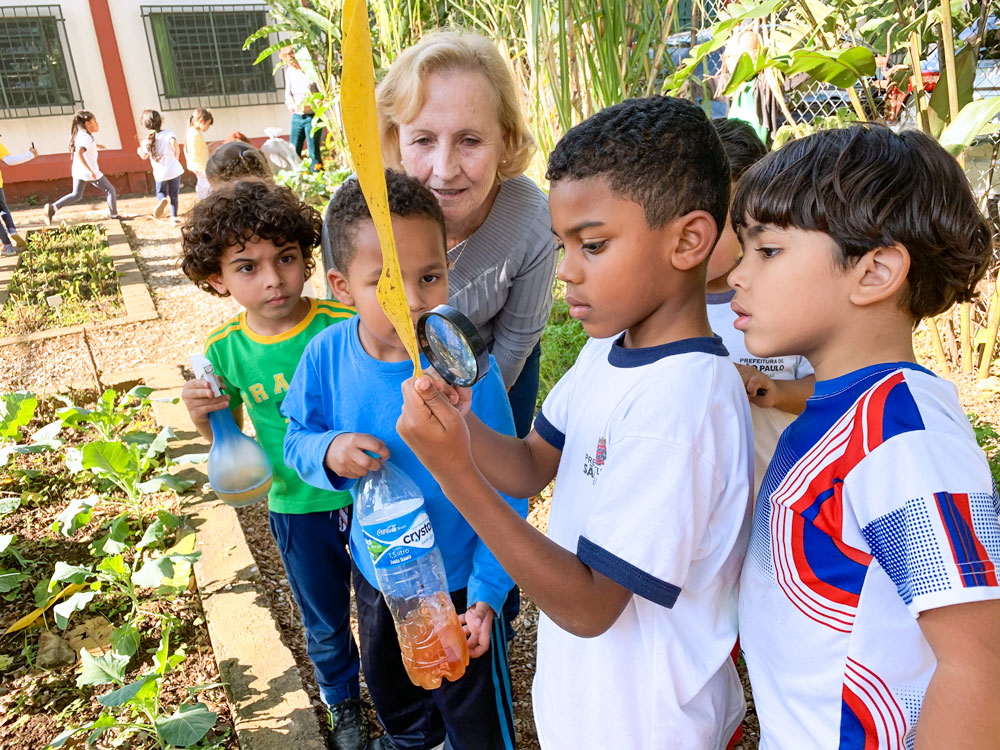About PreSTAR
Preschool Science Talk in Action and Reflection (PreSTAR) is a sustainable, professional development model that aims to enhance science instruction and learning in early care and education settings. This is achieved by providing educators with tools, resources and a supportive community.
A powerful way to boost children’s learning is by engaging in science talk and exploration. Our mission is to enrich children’s learning by strengthening early childhood educators’ science and engineering content knowledge, reflective practice and confidence to guide children in scientific discovery.
Since PreSTAR’s launch in 2017, we’ve gained insights into effective early childhood science teaching practices and learning in diverse contexts. Findings suggest educators’ reflective practice — intentionally thinking about their own practices and adjusting based on what they observe — may strengthen their confidence in science-related interactions and conversations.
Our Goals
The PreSTAR model aims to strengthen early childhood educators’ ability to:
- Build science and engineering content knowledge and confidence to guide children in meaningful learning experiences.
- Closely observe children’s interactions with science materials.
- Effectively use those observations in reflection, planning and teaching.
Our Research
Our research aims to deepen our understanding of how reflective practice impacts educators in early care and education settings, while developing relevant, accurate and developmentally appropriate resources to promote innovation in science teaching and learning.
PreSTAR researchers study potential changes in:
- The quality of educators’ reflections on children’s interactions with science materials.
- The effectiveness of educators’ science talk.
- Children’s own science talk and level of engagement.
Participants
PreSTAR has engaged a diverse group of early childhood educators caring for children ages 4-5 across a range of geographic settings, program types and cultural contexts. Below is a list of partners who have benefited from the model to date:
- EMEI Ignacio (public school, São Paulo, SP, Brazil)
- Escola do Bairro (private school, São Paulo, SP, Brazil)
- Head Start (two sites, federally funded child care program, Lincoln, NE)
- KinderCare (one site, community child care center, Lincoln, NE)

How it Works
Interviews & Survey
Educators are interviewed and surveyed about their backgrounds, goals, practices, attitudes, beliefs and classroom environment. They are also asked questions to assess their comfort, confidence, challenges and perceptions related to using science in the classroom.
Guided Science Activities
Through guided hands-on activities, children use various materials to engage in scientific discovery, prompting them to ask questions, test hypotheses, solve problems and draw conclusions. Materials include everyday objects and things in our natural environment.
Observation & Reflection
Educators watch videos of classroom interactions and observe children’s behavior during science activities. Educators write journal entries to reflect on opportunities to use science in lessons and further engage children in science-related conversations, or science talk.
Research-Based Strategies
Research-based strategies encourage educators to reflect deeply on their own science teaching practices and observations of how children interact with science-related materials. These strategies help them discover what works and find ways to enhance their teaching practices.
Professional Development
During professional development sessions, researchers assist educators in connecting children’s development with science teaching goals, providing clear guidance and high-quality materials to enhance the use of science talk in everyday interactions.
Connection & Community
An online portal is an interactive space for educators to connect, collaborate and communicate with one another and the research team. This platform allows them to ask questions, share ideas, upload media and record journal entries. This platform also allows educators to share information with families.
How it Works
Interviews & Survey
Educators are interviewed and surveyed about their backgrounds, goals, practices, attitudes, beliefs and classroom environment. They are also asked questions to assess their comfort, confidence, challenges and perceptions related to using science in the classroom.
Guided Science Activities
Through guided hands-on activities, children use various materials to engage in scientific discovery, prompting them to ask questions, test hypotheses, solve problems and draw conclusions. Materials include everyday objects and things in our natural environment.
Observation & Reflection
Educators watch videos of classroom interactions and observe children’s behavior during science activities. Educators write journal entries to reflect on opportunities to use science in lessons and further engage children in science-related conversations, or science talk.
Research-Based Strategies
Research-based strategies encourage educators to reflect deeply on their own science teaching practices and observations of how children interact with science-related materials. These strategies help them discover what works and find ways to enhance their teaching practices.
Professional Development
During professional development sessions, researchers assist educators in connecting children’s development with science teaching goals, providing clear guidance and high-quality materials to enhance the use of science talk in everyday interactions.
Connection & Community
An online portal is an interactive space for educators to connect, collaborate and communicate with one another and the research team. This platform allows them to ask questions, share ideas, upload media and record journal entries. This platform also allows educators to share information with families.
